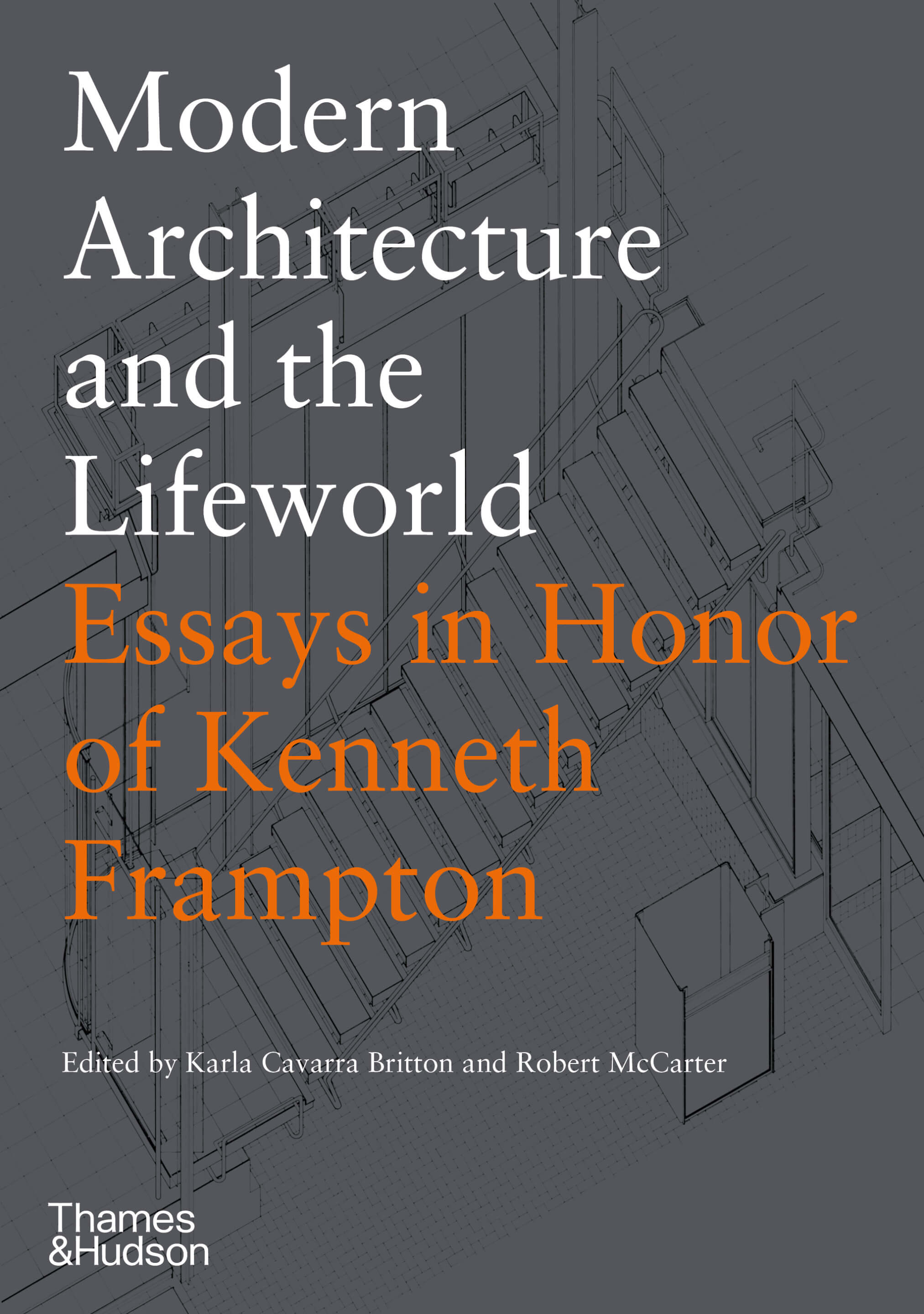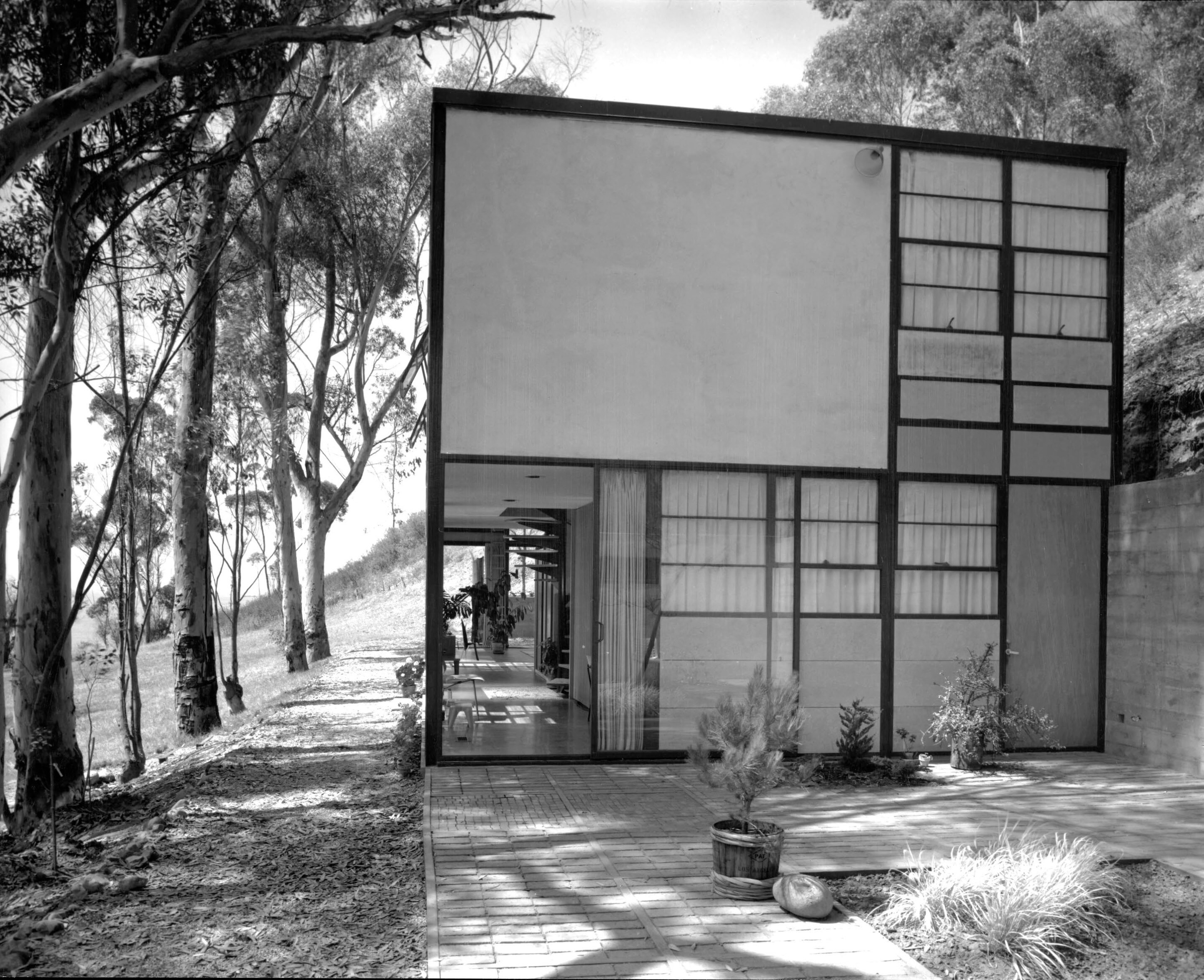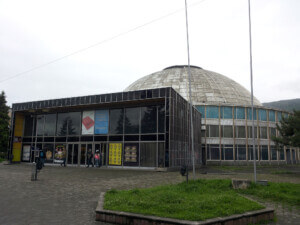Architectural history has a tendency to cross the line into boosterism. Such was the famous contention of the historian Manfredo Tafuri, who chastised his peers for using their platform to promote various stylistic developments. Tafuri originally termed this phenomenon “operative criticism,” effectively damning the practice for decades to come. But one scholar, Kenneth Frampton, has bucked this trend, adopting the phrase for his own ends.
In the estimation of his peer Mary McLeod, Frampton is “arguably the most influential architectural historian since Sigfried Giedion.” His writings and teachings have shaped generations of architects and theorists, including myself. Still, one is given to wonder why Frampton would describe his work as “operative criticism” or “operative history.” Does this not undermine his authority as a historian and critic? Why embrace a label that carries negative connotations?

Two recently published books offer some insight into these complex questions: Modern Architecture and the Lifeworld: Essays in Honor of Kenneth Frampton (2020), expertly edited by Karla Cavarra Britton and Robert McCarter, along with the new edition of Frampton’s 1980 classic Modern Architecture: A Critical History. Both these books make evident Frampton’s extraordinary analytical talents and scholarly brilliance. They also speak volumes about what is missing from the academic training of architectural historians and theorists today.
Modern Architecture and the Lifeworld brings together the voices and perspectives of Frampton’s contemporaries: architects whose careers he influenced, historians whose scholarship he admires, and colleagues and sparring partners whose friendship he still values. It also situates Frampton’s historiographical and theoretical achievements in relation to his life and times: the writings of Hannah Arendt, Jürgen Habermas, and Edward Said, which shaped Frampton’s conception of the public sphere; the student protests of 1968, which stirred his engagement with Critical Theory, Walter Benjamin, and the Frankfurt School; the Venice Biennale of 1980, which instigated Frampton’s forceful critiques of postmodernism; Hal Foster’s The Anti-Aesthetic: Essays on Postmodern Culture (1983), which gave Frampton occasion to theorize Liane Lefaivre and Alexander Tzonis’s notion of critical regionalism anew.
Jean-Louis Cohen’s probing remarks highlight Frampton’s contributions to our knowledge of Soviet avant-garde architecture and urbanism. He details how Frampton, under the influence of Camilla Gray’s The Russian Experiment in Art (1962), brought works by El Lissitzky, Vladimir Tatlin, Ivan Leonidov, and other eastern European artists to the attention of English-speaking architects and historians. At the time, scholars were still heavily under the sway of Giedion’s Space, Time and Architecture and Reyner Banham’s Theory and Design in the First Machine Age, which mostly ignored Soviet achievements in art and design.
Anthony Vidler’s text offers an incisive appraisal of Frampton’s early analysis of Le Corbusier’s Radiant City, which appeared “at a moment when the grand utopias of the Modern Movement were being subject to serious critique.” Vidler explores how Frampton’s early preoccupation with Le Corbusier—who was the subject of Frampton’s last seminar before he retired last year from Columbia University, incidentally—anticipated his later concern with the “spoilation of the environment, the breakdown of local cultures, and the loss of the art of tectonic design.” He suggests that Frampton’s analysis of the Radiant City must be read in relation to the postwar hegemony of the automobile, the proliferation of urban sprawl, and the postwar disenchantment with utopian thought.

Brigitte Shim and Howard Sutcliffe offer a vivid portrait of the newly established Kenneth Frampton archive at the Canadian Centre for Architecture in Montreal. They pull together personal notebooks and conference proceedings, Mylar drawings and professional correspondence, all in an effort to understand Frampton’s “long-standing interest in the crucial role of landscape and topography in the powerful act of placemaking.” Steven Holl, in a very personal account, acknowledges his artistic and professional debt to Frampton. Pritzker Prize laureates Yvonne Farrell and Shelley McNamara underscore the importance of Frampton’s writings on critical regionalism in their evolution as practicing professionals.
But Mary McLeod’s essay is arguably the most significant contribution to the anthology. Her text unpacks the meaning behind Frampton’s usage of the term “critical,” which raised eyebrows at the time. (McLeod contends that the historian “was one of the first, if not the first, to use ‘critical’ in the title of an English-language book on architecture.”) She argues that the identification grew out of Frampton’s growing political awareness, which took root in the late 1960s when he moved to the United States. It allowed him to develop an approach to cultural criticism that took “the risk of proposing alternatives that might offer, however modestly, the promise of a richer, more fulfilling existence.” Frampton’s writings recall the work of Walter Benjamin, McLeod suggests, to the extent that he refuses to abandon hope in the face of rampant ecological devastation and capitalist exploitation.
In my view, one of Frampton’s most attractive traits is how he came of age intellectually long before the professionalization of architectural history and theory. He has never aligned himself with theoretical cliques, which permeate professional academia, nor has he succumbed to the pressures of overspecialization, which limit one’s sense of what is important at any given time. Intellectually restless, he often remarks that he learns as much from his students as they do from him. The clearest evidence of his genuine love of learning can be gleaned from the fifth edition of Modern Architecture. At 735 pages, it is almost twice the length of the previous edition and represents the most substantial reworking of the book since it first appeared in 1980.
With this latest revision, Frampton has sought, in his words, to “widen the scope of the book in order to redress the Eurocentric and transatlantic bias of previous editions of this history.” Taking Luis Fernàndez-Galiano’s Global Architecture circa 2000 (2007) as his starting point, he surveys the major trends in 20th-century architecture from the world’s major continents: Africa, Asia, Europe, Australia, and the Americas. Within each area, he foregrounds select works and practices in nations and regions whose artistic and architectural contributions have been underrepresented to date: Canada, for example, which gave us Patkau Architects; West Africa, which has been the stomping ground of Diébédo Francis Kéré; China, which is home to the Beijing-based ZAO/standardarchitecture; the former Yugoslavia, which was recently the subject of an outstanding exhibition at the Museum of Modern Art. Frampton draws on his encyclopedic knowledge of 19th- and 20th-century socioeconomic and cultural histories in situating each chapter. He traces the careers of specific architects and their practices (Kamran Diba in Iran, for example) in order to give the reader an appreciation for how the modern movement evolved in various geopolitical contexts over the past 50 years.

(From the Julius Shulman photography archive, 1936-1997/© J. Paul Getty Trust.
Getty Research Institute, Los Angeles (2004.R.10))
Consisting of four parts, the new edition of Modern Architecture is sure to attract the interest of architects and students of architecture who are hungry to broaden their artistic and geographical horizons. Parts 1 and 2 are virtually unchanged from previous editions, focusing on the historical avant-garde and postwar European and American modernism. Part 3 includes Frampton’s examination of critical regionalism. Part 4 grapples with modernism in a global context. It is this section that covers wholly new terrain, emphasizing the richly heterogeneous character of the modern movement. Frampton considers here the decisive impact that climate, geography, politics, technology, and culture have had on form and program. His postscript recounts the challenges that architecture faces today. “Our failure to develop a sustainable, homeostatic pattern of residential land settlement over the last half-century,” he writes, “is the tragic corollary of our incapacity to curb our appetite for consuming every possible resource.”
To be sure, Modern Architecture has an operative flavor, as Frampton freely admits. Architects whose practices could be classified as critical regionalist—Rick Joy or Charles Correa’s, for example—are presented in this book in a favorable light. By contrast, “blobitects,” from Frank Gehry to Greg Lynn, come off rather badly. Still, is it really wrong that he expresses preferences for certain figures over others? The reader who seeks a comprehensive and dispassionate overview of recent architectural history should look elsewhere. Postmodernism is underrepresented, for example, despite the fact that it remains a highly influential syntax in contemporary architectural practice. But for anyone interested in the fate of the historical avant-garde—and its continued relevance to the contemporary architectural scene—this book remains in many ways the best resource that we have available. Rooted in the essay form, it speaks clearly and powerfully, reminding us that thoughtful scholarship can be passionate and judicious at the same time. Conviction and commitment may indeed be the essence of critique, as Frampton himself points out: “Despite the constant attempt to maintain a certain level of objectivity, there is an inescapable subjectivity determining one’s choices. Perhaps this is the ultimate meaning of the term ‘a critical history.’”
Nader Vossoughian is associate professor of architecture at the New York Institute of Technology.
AN uses outside referral links. If you purchase something through those links, AN may receive a commission as a result.











